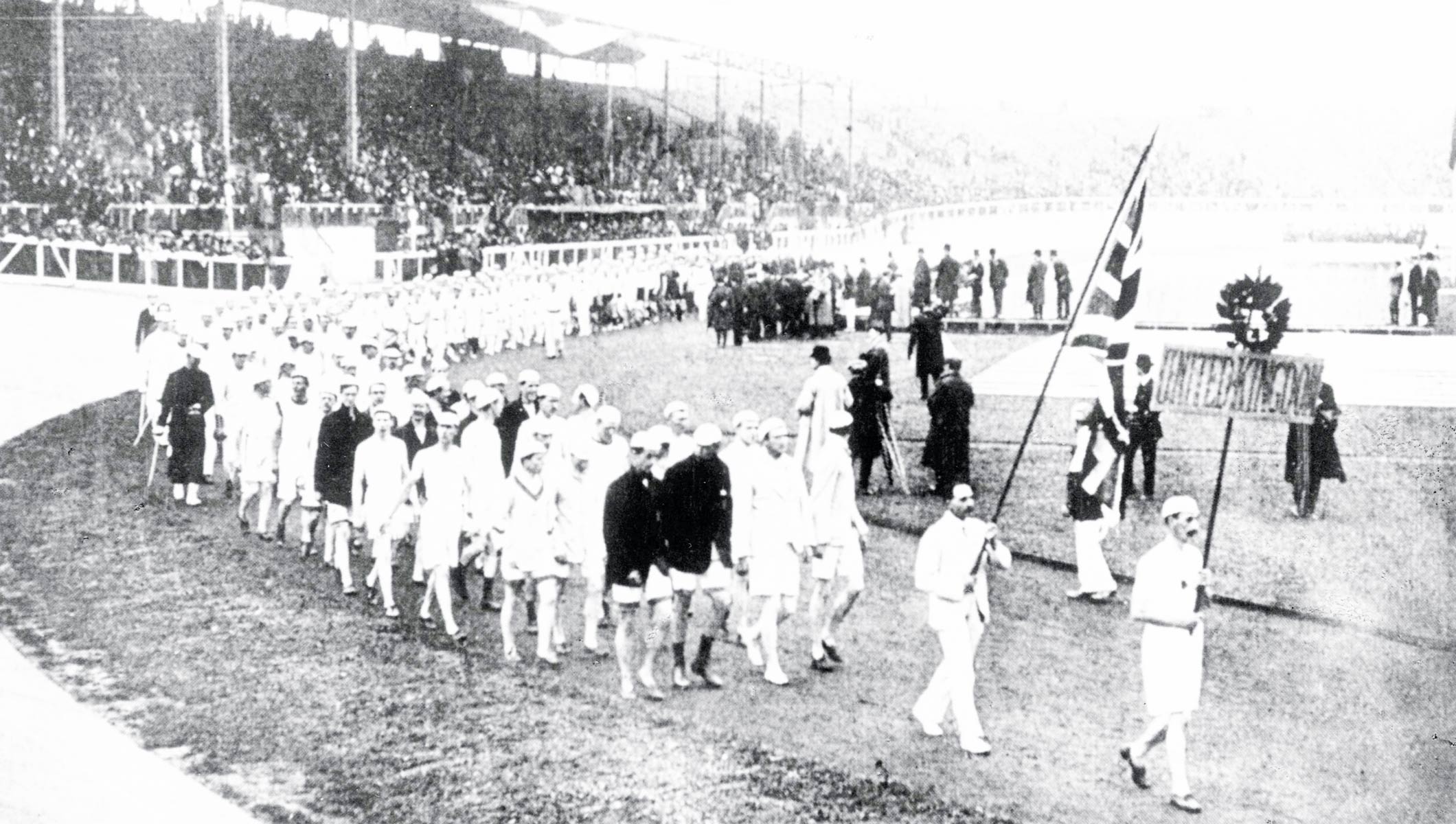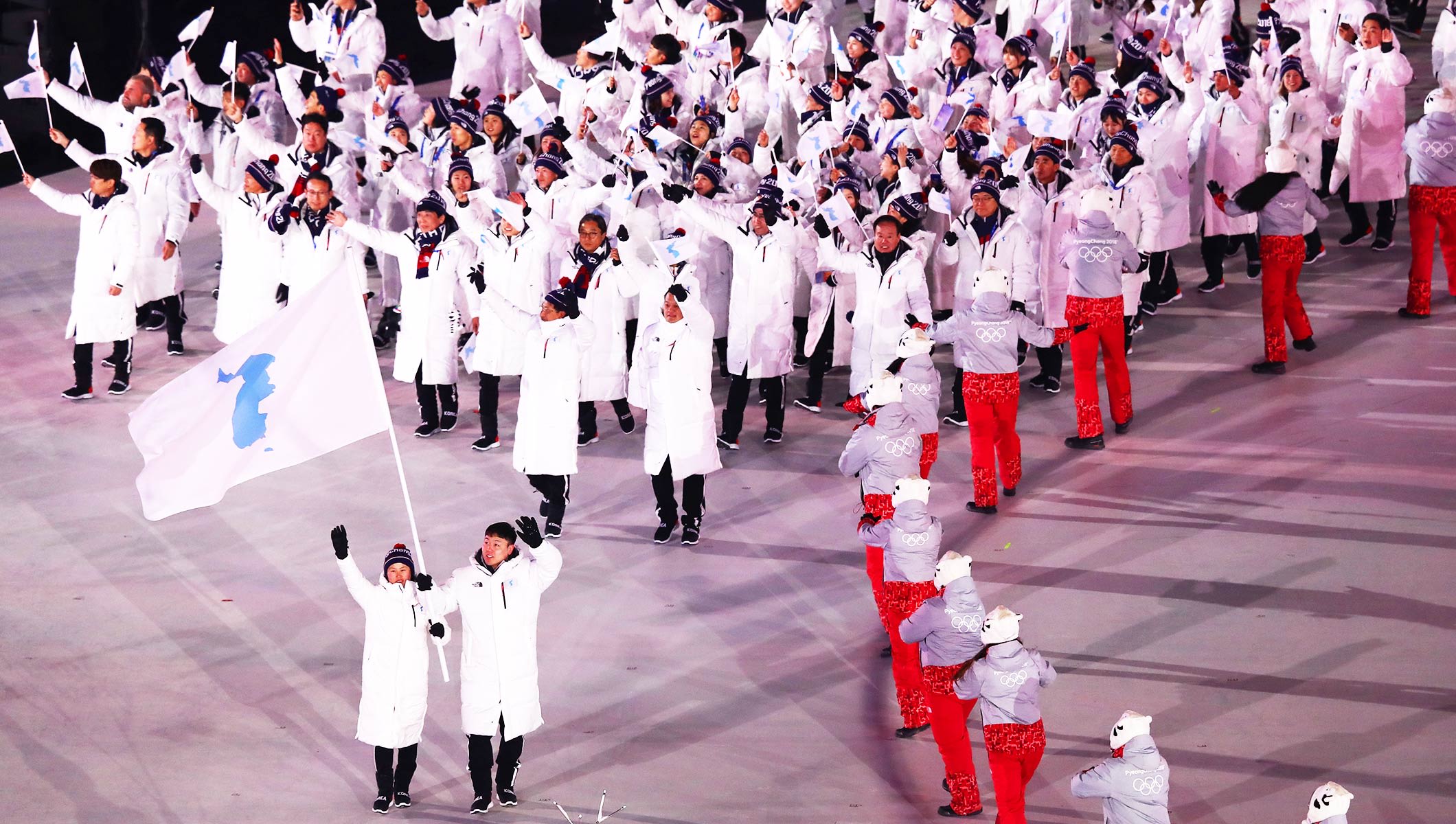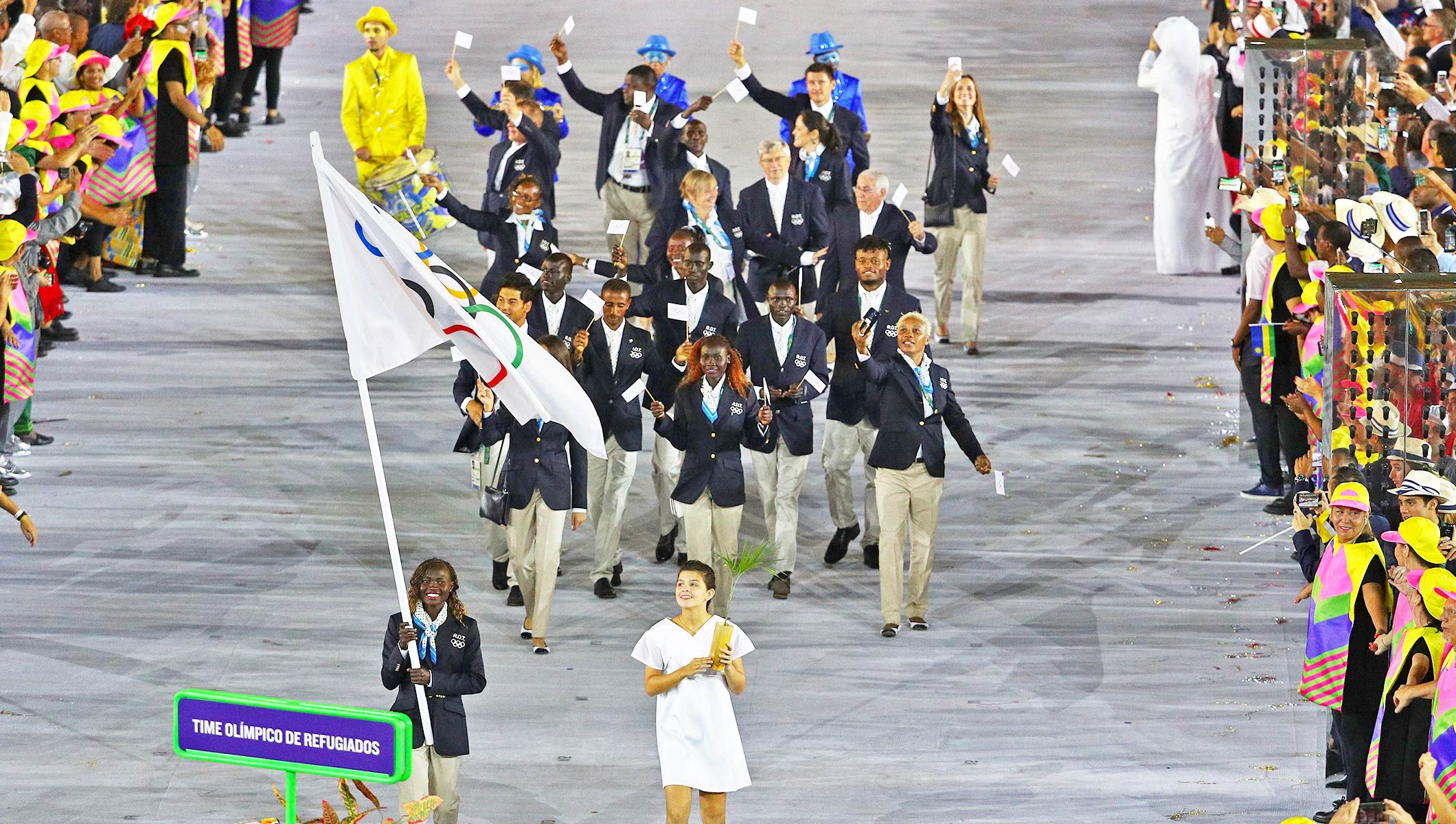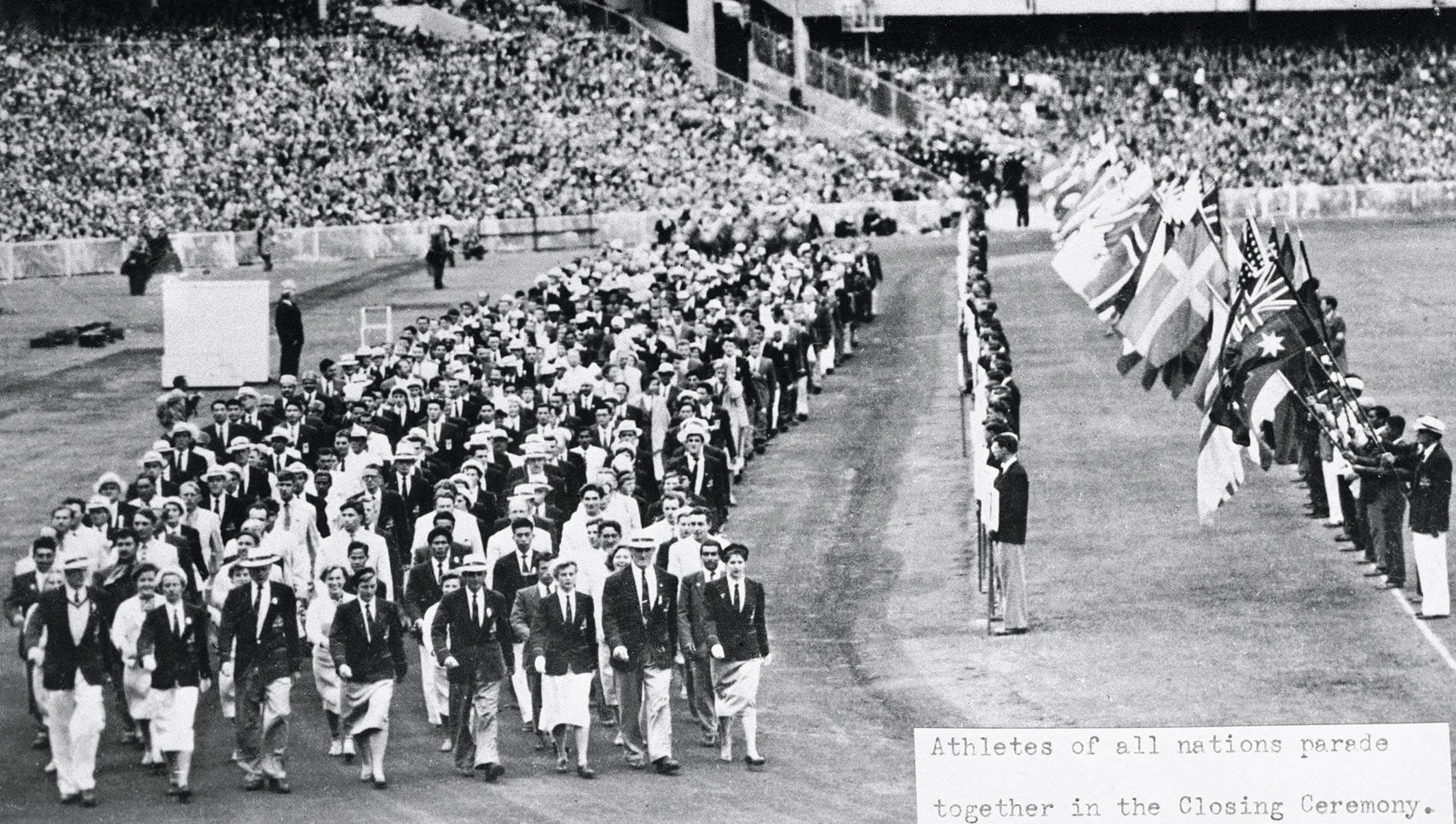The remarkable story of the Athletes’ Parade
As everyone knows, the Olympic Games opening ceremonies begin with the joyous parade of athletes marching behind their flag-bearers. We see them again in an emotional reunion at the closing ceremonies. But did you know how it all began, and why all the participants come together as one at the end of the Games? Let’s go back in time 110 years.
As renowned Olympic historian Karl Lennartz explains, although there was no Athletes’ Parade in Athens in 1896, or in Paris in 1900 or St Louis in 1904 – Games that had no opening ceremony at all – we don’t know precisely why and how this specific part of the protocol was introduced.
While the history books point to the London 1908 Games as having the first parade of athletes marching behind their flag-bearer, Lennartz underlines that in fact this was “inaugurated” two years earlier, at a multisport competition organised in Athens to celebrate 10 years of the first modern Olympic Games. As recounted by Pierre de Coubertin in his memoirs, speaking about the Olympic Congress in Brussels in 1905: “Special games were announced in Greece for 1906. It was expected that the IOC would lend its support and that of its network, already established in various countries by its members”.
These “Intercalated Games” were never classed as official in Olympic chronology. The fact remains that, on 22 April 1906, beginning with the German delegation, the athletes marched in rows of four behind their flag-bearer in the Panathenaic Stadium. According to sources, there were 15 to 20 delegations from every continent, and Greece entered last as the host nation, which became a tradition that continues today: the athletes from the host country bring up the rear. They did a lap of the stadium and then stood facing the royal box.
London 1908: a meticulously organised Athletes’ Parade
The first real Olympic Athletes’ Parade – at the White City Stadium on 13 July 1908, during the Opening Ceremony of the London Games – was meticulously organised. As described in the Official Report: “On the Parade, it is expected that every athlete taking part will be in the athletic costume of his country, or of the sport in which he intends to compete. In the event of it being a wet day, it is left entirely to the discretion of the manager of each team as to what precaution should be taken for the protection of his various members. All teams will parade in the rear of the Stadium, facing Wood Lane, at 2.45 promptly, and behind their respective representatives, who will bear the flag and entablature of their country. Each nationality will be formed up in sections of four, and will be headed eight paces in front by the bearer of its entablature or name of the country and four paces between the entablature and the front column by the bearer of the flag of his country.”
Twenty-two delegations marched in alphabetical order, and that of the British Empire, which closed the Parade, was by far the largest, with 226 athletes. “Sweden, Norway, Denmark, and Finland were especially noticeable for their neat and uniform appearance, while countries in which conscription is the rule showed its influence very plainly in the military precision with which their athletes marched. The Danish ladies in gymnastic costume were loudly and deservedly applauded.” As expected, all the participants aligned in front of the royal box, and the King said: “I declare the Olympic Games of London open!”

The reflection of a changing world and the growth of the Olympic Movement
From these Games of the IV Olympiad, the Athletes’ Parade became an integral part of the opening ceremonies, always at the start, at both the Summer and Winter Games. At first – at Chamonix 1924 and St Moritz 1928 – the athletes marched with their equipment: skis, skates, luges and bobsleighs. It was at Amsterdam 1928 that the tradition of the Greek delegation marching first was introduced – owing to the status of the founding country of the ancient Olympic Games. Alphabetical order for the nations has always been used, but it depends on the language and spelling of the host nation. The first female flag-bearer was Mollie Phillips, a British figure skater, at the Lake Placid Winter Games in 1932, at which the winter athletes finally marched without their equipment.

The Athletes’ Parade has also provided some memorable moments of unity, such as the “two Germanies” (the FRG and the GDR) marching together under the same flag, from 1956 to 1964; then the two Koreas doing likewise for the first time in Sydney in 2000, in Athens in 2004 and then again in PyeongChang in 2018.

The Athletes’ Parade reflects both our changing world and the growth of the Olympic Movement. The number of National Olympic Committees present at the opening ceremonies increased from 18 in 1908 to 205 in 2016 in Rio. All the delegations must be treated equally. No country receives any special treatment. The usual practice is for the athletes to march behind the flag of their country, but there are sometimes exceptions. The Olympic flag has been used by some nations, such as Great Britain in 1980 in Moscow, the Unified Team in 1992 and Timor Leste in 2000. On other occasions, certain delegations have entered the stadium behind a special flag; and in Rio, the Refugee Olympic Team marched behind the Olympic flag, just before the host nation Brazil.

“Only one nation”, John Ian Wing’s idea to close the Melbourne 1956 Games
And then there are the closing ceremonies, where the athletes march again, preceded by other flag-bearers often chosen for their accomplishments during the Games. The story behind why the parade is staged as it is today is particularly noteworthy. The Melbourne Games in 1956 took place within a globally fraught political context. Shortly before the Closing Ceremony, a 17-year-old Australian of Chinese descent, John Ian Wing, wrote an anonymous letter to Sir Wilfred Kent Hughes, the President of the Organising Committee. “I believe it has been suggested that a march should be put on during the Closing Ceremony, and you said it couldn't be done. I think it can be done.” He then explained his idea for the parade: “… there will be only one nation. War, politics and nationality will be all forgotten… Well you can do it in a small way… No team is to keep together, and there should be no more than two team-mates together.”

The idea appealed to Hughes, who submitted it to the Chefs de Mission the day before the Ceremony, and they were all in agreement with it. On 8 December 1956, over 500 athletes from every country marched in a joyous procession, Australian champions Shirley Strickland, Betty Cuthbert, Dawn Fraser and Lorraine Crapp at the front, to enthusiastic applause from the spectators, who were both surprised and moved. There was no specific order, and everyone mingled in the centre of the field. Thus a wonderful tradition was born: all the flag-bearers walking one behind the other, followed by the competitors, united together, without distinction of any kind. Wing was later identified and located by an Australian journalist in 1986, though he now lived in the UK. He was invited to Lausanne in 1992 by President Juan Antonio Samaranch.
Closing Ceremony | Sydney 2000 | Great Olympic Moments
At the Games in Sydney in 2000, a street in the Olympic Park was named “John Ian Wing Parade”. This was how a college student changed the face of the Olympic celebration forever…